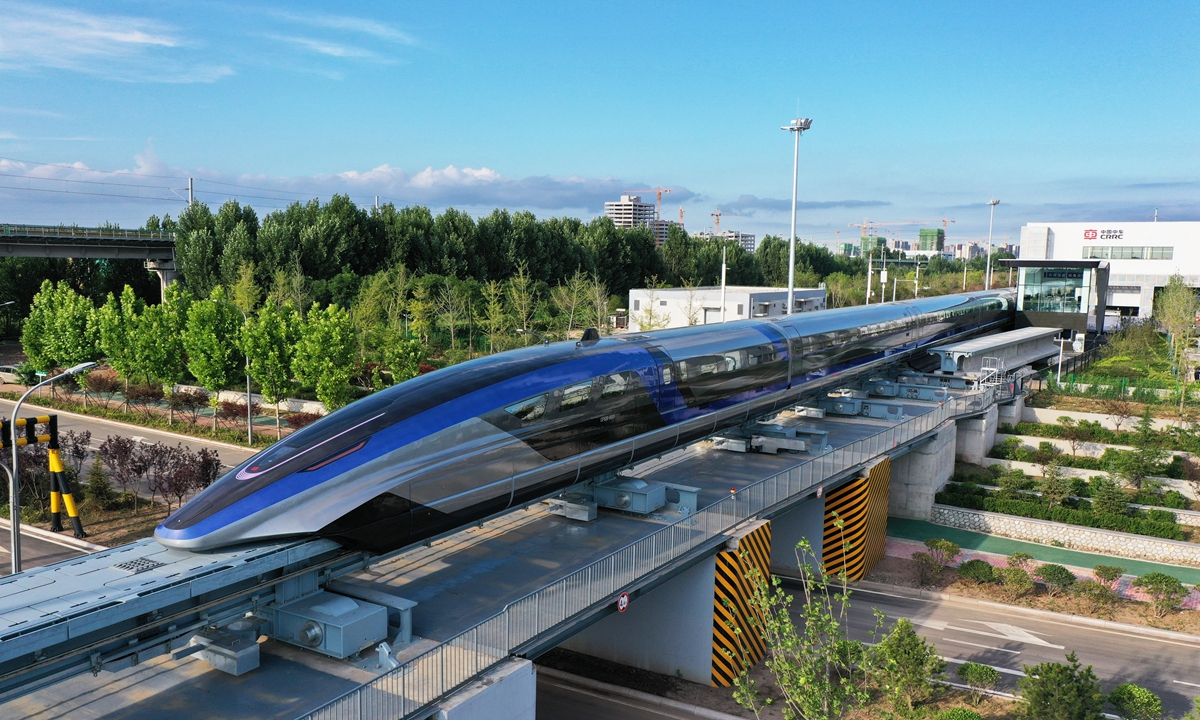
Photo taken on Tuesday shows China's new maglev transportation system in Qingdao, east China's Shandong Province. It is currently the world's fastest ground vehicle. Photo: cnsphoto
Editor's Note: On July 1, China declared it had reached its first centenary development goal - building a moderately prosperous society, or xiaokang, in all respects and is marching confidently toward the second centenary goal of building China into a great modern socialist nation. To decipher what that means in the context of where China is now and where it's heading, the Global Times is publishing a series of multimedia productions about achievements under the xiaokang goal in various aspects. This piece focuses on technological miracles that have changed people's lives.If China were able to build a time machine and send one of its 1.4 billion citizens back to the late 1970s, the person would be stuck in a kerosene lamp-powered life without any electronics. Communication with family and friends would rely on mail carriers. Long-distance travel would mean standing in slow-moving trains for hours or days. Grocery shopping would require different stamps for different items.
Those are just several aspects of what the life of an ordinary Chinese person looked like before China embarked on what has been an unparalleled journey to building a moderately prosperous society in all respects, or
xiaokang - the 2,500-year old concept that was revived by late Chinese leader Deng Xiaoping in 1979 to describe China's goal of modernization.
China might not be able to build a time machine. However, the changes brought about by the country's achievement in science and technology for ordinary Chinese people over the past four decades or so are just as magical as they are miraculous.
Thanks to technological breakthroughs in various areas, kerosene lamps have been replaced with smart lights controlled by voice command or even the sole presence of a person and powered by greener energies. Mail carriers have been replaced with 5G-powered equipment ensuring that family and friends are just a button away. Old slow trains have been replaced with ultra-fast high-speed rail. And to buy groceries, you might just need to scan your face, if you have to show up at all.
Over the past four decades, life in most countries around the world has been changed by advances in science and technology, but none could possibly match the pace or the extent of the change in Chinese life. What China has achieved in terms of scientific and technological advances is nothing short of a miracle.
It's hard to pinpoint China's scientific and technological advances as it leads in countless areas from renewable energy to 5G network, and high-speed rail to artificial intelligence (AI), and has numerous world-leading companies.
Miraculous advancesSeveral statistics may put things into perspective. China's annual research and development (R&D) spending grew 169 times over from around 14.3 billion yuan ($2.21 billion) at the beginning of the 1990s to 2.44 trillion yuan in 2020. Based on exchange rate conversion, China's total R&D expenditures overtook Japan's in 2013, becoming the world's second after the US.
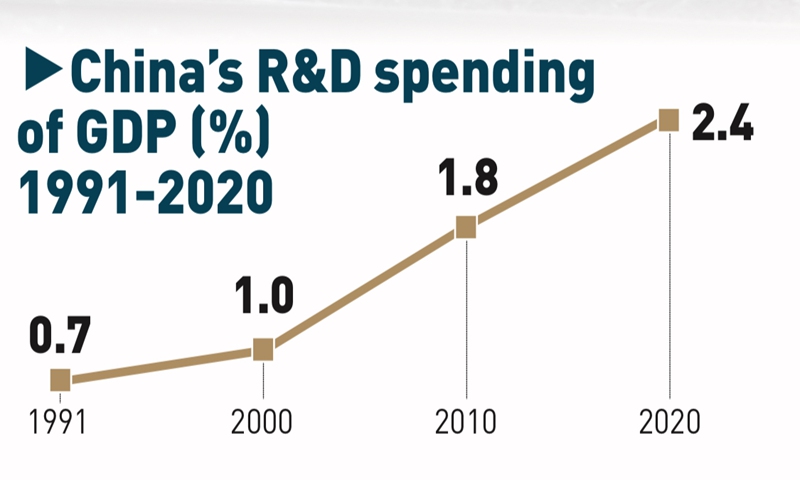
Graphics: GT
China saw its patent applications flourishing from zero case prior to 1985 to 68,720 filings in 2020, having led the world in the number of patent filings since 2011 and overtaking the US in 2019. China has also surpassed the US in terms of the number of academic research papers in 2016.
The profound progress in China's scientific and technological capabilities is an integral part of China's
xiaokang goal, which contains a sweeping set of targets including economic growth, poverty alleviation, as well as technological innovation. At the centennial of the Communist Party of China (CPC) on July 1, Xi Jinping, Chinese president and general secretary of the CPC Central Committee, declared the completion of the goal and called for further building up of the country's strength in science and technology.
Technological innovation and independence have been included as a core part of the CPC's next centennial goal of building China into a modern socialist power by 2050. And with the CPC's firm leadership, innovation-driven strategies, and unique institutional strength, China is well-positioned to become a technological superpower along the journey to socialist modernization, analysts have said.
"The institutional advantage of socialism with Chinese characteristics, as reflected in the CPC's centralized and unified leadership, is also a key factor that drives the nation to concentrate its efforts on major tasks in order to make breakthroughs in areas that are closely related to national security and core competitiveness," Sun Fuquan, vice-president of the Beijing-based Chinese Academy of Science and Technology for Development, affiliated with the Ministry of Science and Technology, told the Global Times.
Some current global technological leaders, most notably the US, have been increasingly nervous about China's technological rise and have even moved to contain China's rise. However, just as technological advancements under the
xiaokang goal were aimed primarily at improving the livelihood of the Chinese people, China's pursuit of further scientific and technological advances are also aimed at further improving the lives of the Chinese people, analysts have said.
To understand where China is headed in terms of how future technologies could change lives, it's noteworthy to look back at how China's achievements over the past several decades completely changed the most basic aspects of life that many have taken for granted.
Kerosene lamp to green brightness
With China's electricity market design highlighting a wide-reaching network of ultra-high voltage (UHV) transmission lines and a gradual shift toward renewable energy, the country's rise as the world's second-largest economy has been well underpinned by its miraculous advance in terms of power, experts have said.
Such a miracle apparently overshadows the US, which is still being haunted by blackouts, as slow UHV progress versus an over-reliance on non-renewable energy fundamentally challenges the stability of the US power supply.
Recollecting herself as a young woman in her mid-20s when the
xiaokang goal began, a 65-year-old retiree from East China's Anhui Province surname Xing told the Global Times that a typical nightlife scene then was family members sitting around a kerosene lamp. Later on, during the early days when electric lights became initially available, kerosene lamps, candles, and flashlights remained viable alternatives.
Over four decades on, she now takes the brightness of bulbs as a guarantee wherever she might be and she even has a handful of color-changing lighting devices that react to her touch and could be synced to music. She said she's now gotten accustomed to the company of a wide array of home appliances and electronics gadgets.
As the country continued to gain economic momentum over the years, its electricity consumption has soared amid the influx of various digital gadgets into Chinese households.
Last year, the country's power consumption grew by 3.1 percent from the previous year to 7.51 trillion kilowatt hours, official data showed. Back in 1979, China only consumed 276.2 billion kilowatt hours, media reports said.

Photo: VCG
Behind the vicissitudes of life is the country's electricity revolution that has rendered different sources of power an increasingly important part of its technological rise.
With a national network of UHV transmission lines in place that transmit energy over a long distance, linking far-flung interior regions with abundant solar, wind, hydro, and nuclear power to energy-thirsty coastal regions, China has taken the global lead in enabling efficient, cost effective, and environmentally friendly power transmission.
The transition underway toward renewable energy, notably solar and wind power, is considered as the cornerstone of the Chinese economy's aim to hit peak emission by 2030 before becoming carbon neutral by 2060.
By comparison, the US, a major global energy producer and consumer, has made slow progress in building a powerful national electricity grid, although a UHV transmission superstructure is widely seen as a solution to the aging transmission infrastructure that cripples the nation.
Mail carriers to 5G network
Another high-profile technological miracle is the giant leap China has taken in eventually establishing itself as a world leader in 5G, to the extent of unnerving the US which has gone to extreme lengths to sanction Chinese 5G equipment vendors, notably Huawei, industry watchers have said, attributing the feat to the country's continued, forward-looking commitments to updating its telecom infrastructure.
The eagerness for the arrival of mail carriers to make a delayed connection with your friends or family members, and the excitement of making a call on a public rotary dial telephone, among the common things in the earlier decades were only emblems pictured in some TV episodes or movies of that era.
With a 1 billion-strong population of internet users, the country is now acknowledged as the global paradise for mobile communications where tech-savvy users with at least one smartphone are now deeply immersed in a mobile internet-linked world: Real-time video calls or conferences, geographically unbound mobile payments, shopping, food ordering, and taxi-hailing, among other activities that are all powered by the country's almighty mobile network.
By the end of 2020, China's mobile phone subscribers had reached 1.59 billion. In stark contrast, there were only 3,000 subscribers in 1988 when China ushered in the era of mobile communications for the first time.
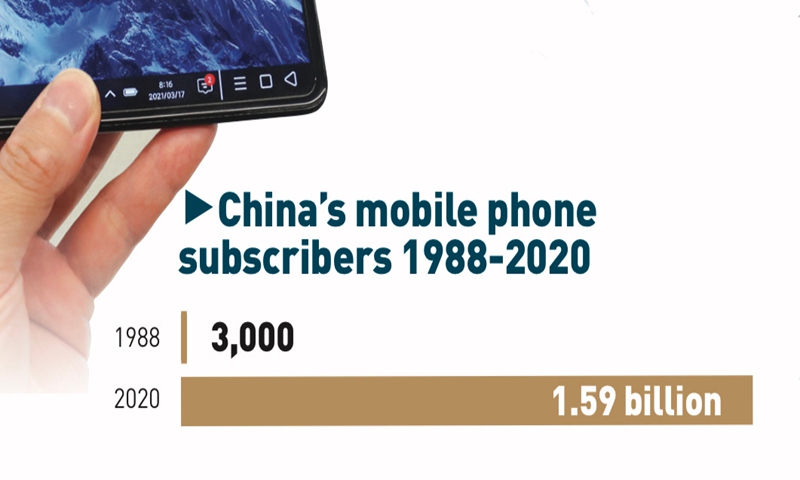
Graphics: GT
By the end of 2020, a total of 989 million users in China were enjoying fast connectivity speeds and a rich variety of internet content by surfing on the web. In stark contrast, only 620,000 people could have access to the internet in 1997, the first year that marked China's entrance into the age of the internet.
With internet-related industries taking a huge step, the country has rolled out 916,000 5G base stations, accounting for 70 percent of the world's total, and it's now home to over 365 million 5G-connected devices, making up 80 percent of the world's total, according to latest official data.
The country's rise as a global leader in the 5G era, with domestic heavyweights including Huawei sitting atop the world's 5G-related patents, has unnerved the US in particular. Feeling frequently on edge over the past few years, the US government has gone to desperate lengths to add a rising number of Chinese entities and businesses to its export control and sanction lists.
China, for its part, has been pushing even harder into a head start in next-generation wireless communication.
In a fresh sign, Shanghai, where its Pudong New Area has recently been declared to be built into a pioneer area for socialist modernization in the coming decades, on July 21 unveiled a plan for the development of strategic, emerging industries during the 14th Five-Year Plan (2021-25). The development plan prioritizes breakthroughs in 6G core technologies and the active participation in 6G standardization competitions.
Isolation to high-speed travel In yet another instance of China's miraculous rise in the tech world, high-speed rail (HSR) technology and bullet trains are now almost instantly labeled Chinese made, although it is actually China's fast-paced and impressive progress in HSR technology that makes many forget that the first HSR system began operations in Japan. The country's focus on sharpening its edge in higher-end manufacturing arguably makes the case for the HSR miracle, observers have said.
Riding on an ultra-fast, comfortable HSR from Shanghai to Beijing, Liu, a frequent traveler, booked a food delivery via his smartphone one hour before the train stopped for a few minutes at the station in Ji'nan, capital of East China's Shandong Province.
Receiving a freshly made rice and meat set meal from a restaurant outside the train carriage, Liu told the Global Times how he marveled at the drastic changes of train technologies and services.
He still recalls the scene a decade ago when standing in the train for a whole night, enduring its slow movement, and felt his feet completely go numb on reaching the destination.
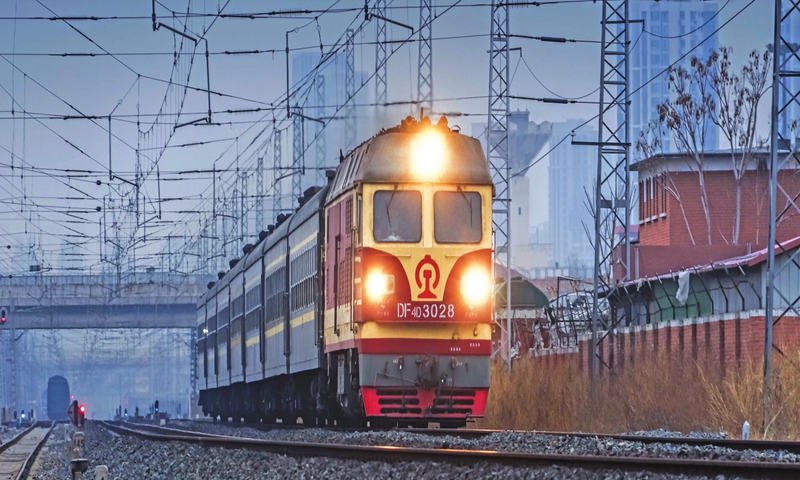
Photo: VCG
Now the Beijing-Shanghai HSR, one of China's busiest and fastest rail lines, carried 1.35 billion passengers during its first decade of operation, running a distance equivalent to approximately 40,000 revolutions around the globe. It takes only four and a half hours between the two major cities, compared with nearly 17 hours in the 1980s on the green-skinned train.
By the end of 2020, the country had more than 37,900 kilometers of HSR lines in service, the longest in the world, according to China State Railway Group, the country's railway operator.
Marked as a historical breakthrough, the HSR demonstrated to the world the country's growing technology prowess by mastering technology in its own hands that was once held by Japan, Germany, and France, as well as its increasing prosperity as the world's second-largest economy.
Not stopping its pursuit for more advanced HSR technologies, China is among the first in the world to introduce new technology such as autonomous train operation, as evidenced in the high-speed railway line connecting Beijing and Zhangjiakou, the cities to co-host the Beijing 2022 Winter Olympics.
With a maximum design speed of 350 kilometers per hour (kph), the trains can automatically start and stop, run between stations, open and close doors, as well as handle emergencies, marking the first time China will have had autonomous high-speed trains.
To seek higher speed on land, China's self-developed high-speed maglev transportation system running at a speed of 600 kph debuted in Qingdao, East China's Shandong Province, on July 20, which symbolized a cutting-edge scientific and technological achievement in the field of rail transit.
Stamps to facial scan China's spectacular march in artificial intelligence over the past decade is surely another miracle that can't be overlooked when gauging the country's technological revolution at a much later stage of its
xiaokang adventure, as the economy's transition toward being innovation-oriented has prioritized AI, alongside big data and cloud computing, among other emerging technologies, to power the economic growth.
As a consequence of the country's stunning leap toward being a trendsetter in AI, face recognition-enabled ticket checking machines have been deployed in a growing number of railway stations across the country. Face recognition clocking in machines are also becoming commonplace in the country.
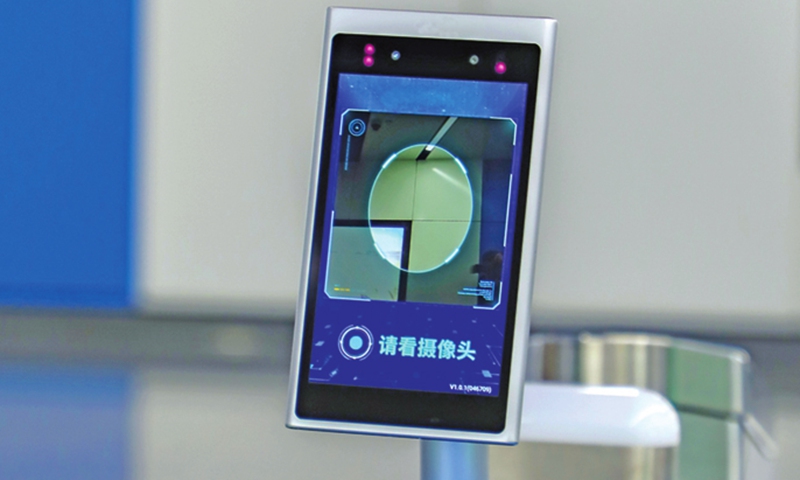
Photo: VCG
Thanks to broad-base applications of AI technology into everyday life and the workplace, these technological advancements helped in the quick and effective tracing of virus infections, with the country ahead of other major economies in emerging from the COVID-19 pandemic.
In a sign of the country's fabulous stride from a manufacturing hub to a global technology power into the future, China holds 389,571 out of over 520,000 AI patent applications globally over the past decade, according to findings in a report by the Tsinghua University Artificial Intelligence Research Institute earlier this year.
The four Chinese AI heavyweights - Megvii, SenseTime Group, YITU Technology, and CloudWalk - have also in recent years bagged numerous world-class AI-related awards, notably in image recognition and algorithm terms.
The country has achieved a transition in AI technologies development from a focus on basic research to the enabling of its application into specific industries to AI functioning as infrastructure, Sun Jian, chief scientist of Megvii, said at the AI firm's tech open day in Beijing in mid-July.
As part of efforts to close China's gap with the US in the AI ecosystem, Megvii has unveiled its proprietary open-source deep learning framework, MegEngine, as a new, promising alternative to Google's TensorFlow and Facebook-backed PyTorch.
Maps to navigation satellitesLast but not the least, a number of milestones China has hit in the aerospace spotlight the country's enviable miracle in space technology, backed by efforts of several generations of China's space industry experts to turn the country into a space power.
An autonomous driving car packed with vegetables, fruits, and fresh seafood was driving to a residential area in Beijing's Shunyi district in July 2020 when the coronavirus epidemic put many people to stay at home.
By receiving the signal of BeiDou Navigation Satellite System (BDS), the driverless car could adjust its route in real time operation while being guaranteed to stay on the right track.
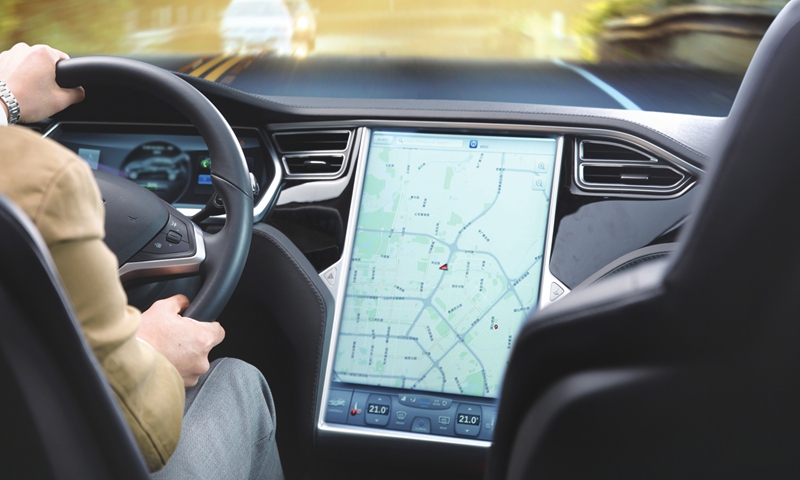
Photo: VCG
It was just one of various scenarios that the Chinese home-grown navigation system was applied to in quotidian life.
With the last BDS satellite successfully sent into space in June 2020, it marked the completion of the country's domestically developed BeiDou constellation.
The satellite system has now become part of usual technological advances in China in the space area; however, it was hard to imagine how Chinese pioneers overcame difficulties in extreme conditions to undertake "mission impossible" back in the 1970s.
With the familiar melody of "Dongfanghong", a Chinese song that pays tribute to Chairman Mao, broadcasting from space, China's first man-made satellite Dongfanghong-1 was successfully launched in 1970. The launch was via China's own booster - Long March 1 rocket, making China the fifth nation to put a spacecraft into orbit using its own rocket.
By that moment, China had proved to the world that it could realize what other foreign countries could. China's aerospace development started late from a low point, but has achieved outstanding progress in a short period of time. Through the efforts and contributions of several generations of people engaging in the aerospace cause, China has caught up with the world's other aerospace powers.
Following successful tests of its first atomic bomb and hydrogen bomb in the 1960s, and the Dongfanghong-1 satellite, China opened a new chapter in space exploration, sending hundreds of self-developed spacecrafts including man-made satellites, crewed spacecrafts, and space probes.
The space industry has produced a remarkable score over the past two years characterized by the nation's first independent Mars mission and the Chang'e 5 mission that retrieved rock and soil samples from the moon.
The latest advance came as China sent three taikonauts into orbit in June via the Shenzhou-12 spaceship, the first of four crewed space flights to complete the country's space station by the end of 2022.










